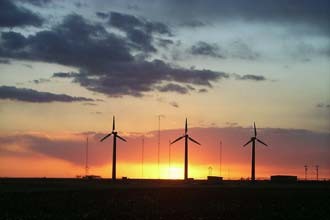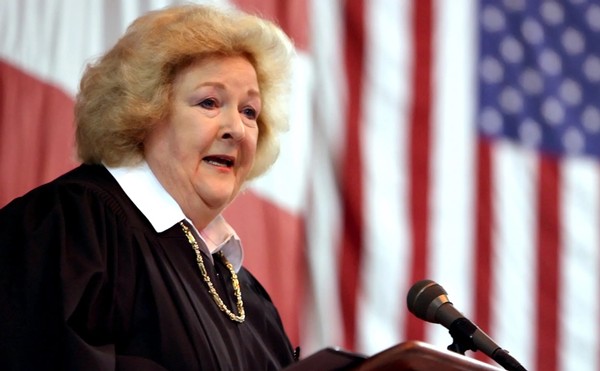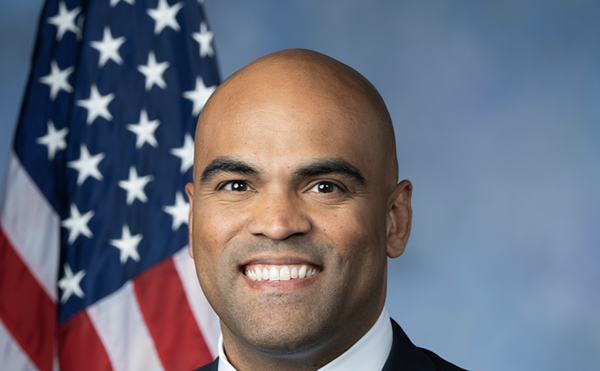| Wind and solar energy are among the topics of the Texas Renewables Conference. Renewable energy continues to get short shrift in the latest version of the federal energy bill. (courtesy photo) |
Earlier this year, when Linda Stone, executive director of the Metropolitan Partnership for Energy, planned the Texas Renewables Conference, she didn't know it would coincide with Congressional hearings on the federal energy bill.
Yet, the conference, which runs from November 20-22, couldn't have been better timed. The bill, whose overall direction was crafted by Vice-President Dick Cheney's secret energy task force, with the details clandestinely drafted by Republicans, lacks a commitment to renewable energy. The bill's emphasis on fossil fuels illustrates the gap between the progressive vision of those energy activists working in the trenches and the short-sightedness of politicians floating in the rarefied air of Washington.
So underlying the conference lectures on green building, energy efficiency, and wind, solar, and hydrogen power, lingers the question: How can renewable energy proliferate in the face of the Bush administration, one powered by big bucks from the fossil fuel industries?
"It's very, very difficult," says Bill Sinkin, chairman of Solar San Antonio, a non-profit group helping to coordinate the event. "The drive is there, but we need committments from the state, local, and federal government with subsidies, just like oil and gas get. But I would say when there is a $3 billion subsidy for gas and oil and $20 million for solar, it shows where the support of the administration is."
While the feds duke it out on Capitol Hill, Texas has taken the lead on several energy initiatives, including the Metropolitan Partnership for Energy itself.
In 2001, the Texas Legislature passed Senate Bill 5, which created the need for the MPE, a non-profit group funded by CPS, the city, and the county to help meet the state's energy efficiency goals. Under the law, more than 20 Texas counties, including Bexar, must reduce their electricity consumption 5 percent each year through 2006, and have to report their results to the State Energy Conservation Office.
The state also has enacted a Renewable Energy Portfolio, passed by then-Governor George W. Bush, requiring Texas utilities to generate 3 percent of their energy from renewables by 2009. It also mandates that 2000 megawatts of new renewable energy capacity be built before the end of the decade.
The current federal energy bill omits a similar federal requirement for all U.S. utilities to increase their reliance on renewables.
"Some people don't like the idea of requirement on utilities," says Christine Real de Azua, spokesperson for the American Wind Energy Association, which will attend the conference. "Frankly it's going to be very much uphill, even though we have Texas as a success story of a state that's shown it `the requirement` can be market-friendly."
City Public Service adopted a goal of generating 4 percent of its energy from renewables by 2013, a move criticized by some environmental activists for being unambitious. Although CPS allows its customers to purchase wind energy for their homes or businesses through its Windtricity program, the utility is moving ahead on plans for a $1 billion coal-fired power plant.
About 1 percent of energy in the U.S. is generated from renewables - including wind, solar, hydrogen, and biomass - compared to 20 percent in Denmark, which also uses natural gas, a cleaner-burning, but more expensive fossil fuel. "It's an example of what's possible," Real de Azua says. "Denmark doesn't want to do nuclear and is using renewables. And the grid works well."
| TEXAS RENEWABLES CONFERENCE Thursday, November 20-Saturday, November 22 $50 one-day rate; $100-$125 three-day rate Sheraton Gunter Hotel 205 E. Houston For a complete schedule of events, go to www.sanantonioenergyleadership.org |
Another challenge for renewable energy proponents is to take the ideas - such as building energy-efficient houses, installing wind turbines and solar panels on homes - from the boardroom to the living room.
"Ultimately, we want to build economic development in San Antonio around sustainable building and renewable energy," says Stone. "We need to be the center for supply and demand."
Stone says MPE is promoting the concept of "green" building and mortgages, in which contractors receive tax incentives to build energy-efficient homes, and Fannie Mae, Freddie Mac, Veteran Administration, the Federal Home Administration, and other mortgage companies help offset the cost of buying or rehabbing these houses through low-interest loans or grants.
"There are opportunities, but a big problem is education," says Sinkin. "But the engineers and architects have not seen it."
Solar energy could also make inroads into schools. After personnel costs, energy costs take the biggest bite from school districts' budgets. With solar energy, Sinkin says savings could reach $5 million for all the county's districts combined.
As chairman of their respective energy committees, U.S. Representative Billy Tauzin (R-Louisiana) and Senator Pete Domenici (R-New Mexico) are touting their energy bill - which removed a provision to allow oil drilling in the Arctic National Wildlife Reserve, but gives tax breaks to polluters - conference attendees at the Gunter Hotel will be discussing renewable fuels, affordable green building, and wind transmission lines.
And herein lies the challenge for renewable energy suppliers - and users: Tauzin received more than $337,000 in contributions from the fossil fuel energy industry since 2001; Domenici, more than $360,000. The renewable energy lobby doesn't have the deep pockets to compete with the electric utilities, coal companies, and oil conglomerates.
Yet Sinkin says that if local governments and communities demand renewables, and demonstrate money can be made from the fledgling industry, then the feds will have to take notice.
"The troglodites are in charge of the environmental process in Washington," he notes. "But all the armies in the world can't stop an idea whose time has come." •



















